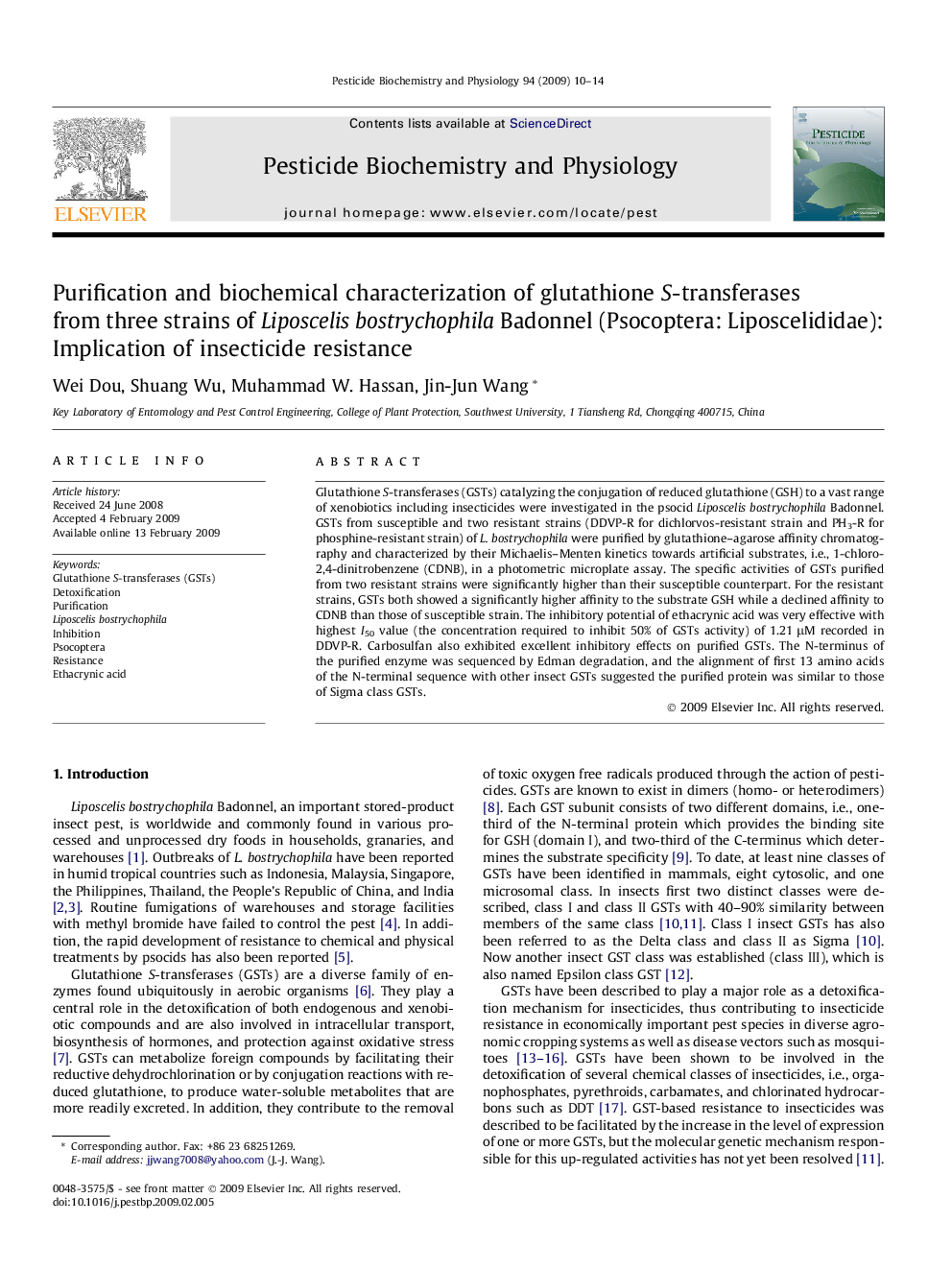| Article ID | Journal | Published Year | Pages | File Type |
|---|---|---|---|---|
| 2009915 | Pesticide Biochemistry and Physiology | 2009 | 5 Pages |
Glutathione S-transferases (GSTs) catalyzing the conjugation of reduced glutathione (GSH) to a vast range of xenobiotics including insecticides were investigated in the psocid Liposcelis bostrychophila Badonnel. GSTs from susceptible and two resistant strains (DDVP-R for dichlorvos-resistant strain and PH3-R for phosphine-resistant strain) of L. bostrychophila were purified by glutathione–agarose affinity chromatography and characterized by their Michaelis–Menten kinetics towards artificial substrates, i.e., 1-chloro-2,4-dinitrobenzene (CDNB), in a photometric microplate assay. The specific activities of GSTs purified from two resistant strains were significantly higher than their susceptible counterpart. For the resistant strains, GSTs both showed a significantly higher affinity to the substrate GSH while a declined affinity to CDNB than those of susceptible strain. The inhibitory potential of ethacrynic acid was very effective with highest I50 value (the concentration required to inhibit 50% of GSTs activity) of 1.21 μM recorded in DDVP-R. Carbosulfan also exhibited excellent inhibitory effects on purified GSTs. The N-terminus of the purified enzyme was sequenced by Edman degradation, and the alignment of first 13 amino acids of the N-terminal sequence with other insect GSTs suggested the purified protein was similar to those of Sigma class GSTs.
